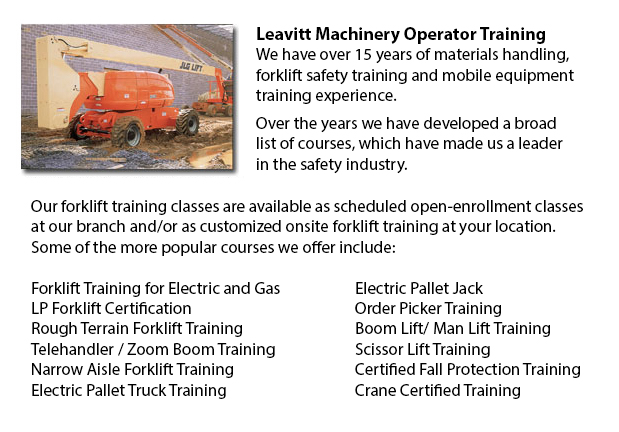
Port Coquitlam Boom Lift Certification - Elevated work platforms allow maintenance operations and work to be performed at heights that can not be reached by any other method. Boom Lift Certification Training educates workers regarding the safe operation of boom lifts and scissor lifts.
Despite the variety in lift style, site conditions and applications, all lifts have the potential for death or serious injury when not safely operated. Electrocution, falls, crushed body parts, and tip-overs can be the tragic outcome of improper operating procedures.
In order to avoid aerial lift incidents, boom lift operators need to be trained by workers who are qualified in the safe operation of the specific kind of aerial lift they would be utilizing. Aerial lifts must never be modified without the express permission of the manufacturer or other recognized entity. If you are leasing a lift, make certain that it is properly maintained. Prior to utilizing, controls and safety devices should be checked to ensure they are working correctly.
Operational safety procedures are vital in avoiding incidents. Operators must not drive an aerial lift with an extended lift (even though a few are designed to be driven with the lift extended). Always set brakes. Set outriggers, if available. Avoid slopes, but when necessary make use of wheel chocks on slopes which do not exceed the slope limitations of the manufacturer. Adhere to weight and load limits of the manufacturer. When standing on the platform of boom lifts, make use of a safety belt with a two-foot lanyard tied to the boom or basket or a full-body harness. Fall protection is not needed for scissor lifts which have guardrails. Never climb or sit on guardrails.
This course comprises the following topics: safety guidelines to prevent a tip-over; training and certification; surface conditions and slopes; checking the travel path & work area; stability factors; other tips for maintaining stability; leverage; weight capacity; testing control functions; pre-operational inspection; safe operating practices; mounting a motor vehicle; safe driving procedures; overhead obstacles and power lines; use of lanyards and harness; PPE and fall protection; and avoid falling from the platform.
When successful, the trained worker will learn the following: pre-operational check procedures; authorization and training procedures; factors affecting the stability of scissor and boom lifts; how to prevent tip-overs; how to use the testing control functions; how to use PPE and strategies in order to prevent falls.
-
Port Coquitlam Order Picker Training
Port Coquitlam Order Picker Training - Order picker's allows warehouse workers to lift pallets utilizing forks. Also known as a stock picker, this electrically-powered machinery is like a forklift except that an order picker is also made use of to li... More -
Port Coquitlam Telehandler Operator Training
Port Coquitlam Telehandler Operator Training - Telehandler forklifts or Telescopic Handler forklifts are common industrial machinery found in numerous construction industry environment. The telehandler is a useful machine and makes for a valuable too... More -
Port Coquitlam Crane Operator Classes
Port Coquitlam Crane Operator Classes - For the operators and the supervisors, new and current, the crane operator training course is suitable for all. Course content includes applicable federal, provincial and state safety regulations. The first com... More -
Port Coquitlam Loader Operator Training
Port Coquitlam Loader Operator Training - What It Actually Takes To Finish A Loader Operator Training Course - Lift truck training is a prerequisite within North America and is intended to prevent workplace injuries and death. Forklift training offer... More -
Port Coquitlam Scissor Lift Certification
Port Coquitlam Scissor Lift Certification - Numerous worksites and tradespeople like for instance welders, masons and iron workers utilize scissor lift platforms in order to help them reach elevated work places. The operation of a scissor lift is usu... More -
Port Coquitlam Aerial Platform Training
Port Coquitlam Aerial Platform Training - Aerial lifts are able to accommodate numerous duties involving high and tough reaching spaces. Normally utilized to perform routine upkeep in buildings with lofty ceilings, trim tree branches, hoist burdensom... More -
Port Coquitlam Manlift Safety Training
Port Coquitlam Manlift Safety Training - It is vital for skilled Manlift operators to be aware of the connected dangers that come with particular types of scissor lifts. They should be able to operate the scissor lift in a way that protects not only... More -
Port Coquitlam Heavy Equipment Training Courses
Port Coquitlam Heavy Equipment Training Courses - When choosing a heavy equipment operator course, the first step should be to determine the capacity in which you would be working with heavy machinery. You could find the best course to teach you how... More

Forklift Certification Port Coquitlam
TOLL FREE: 1-888-254-6157
Port Coquitlam, British Columbia
forkliftcertificationportcoquitlam.com
Email Us
About Us


